
agents
A powerful framework for building realtime voice AI agents 🤖🎙️📹
Stars: 7489
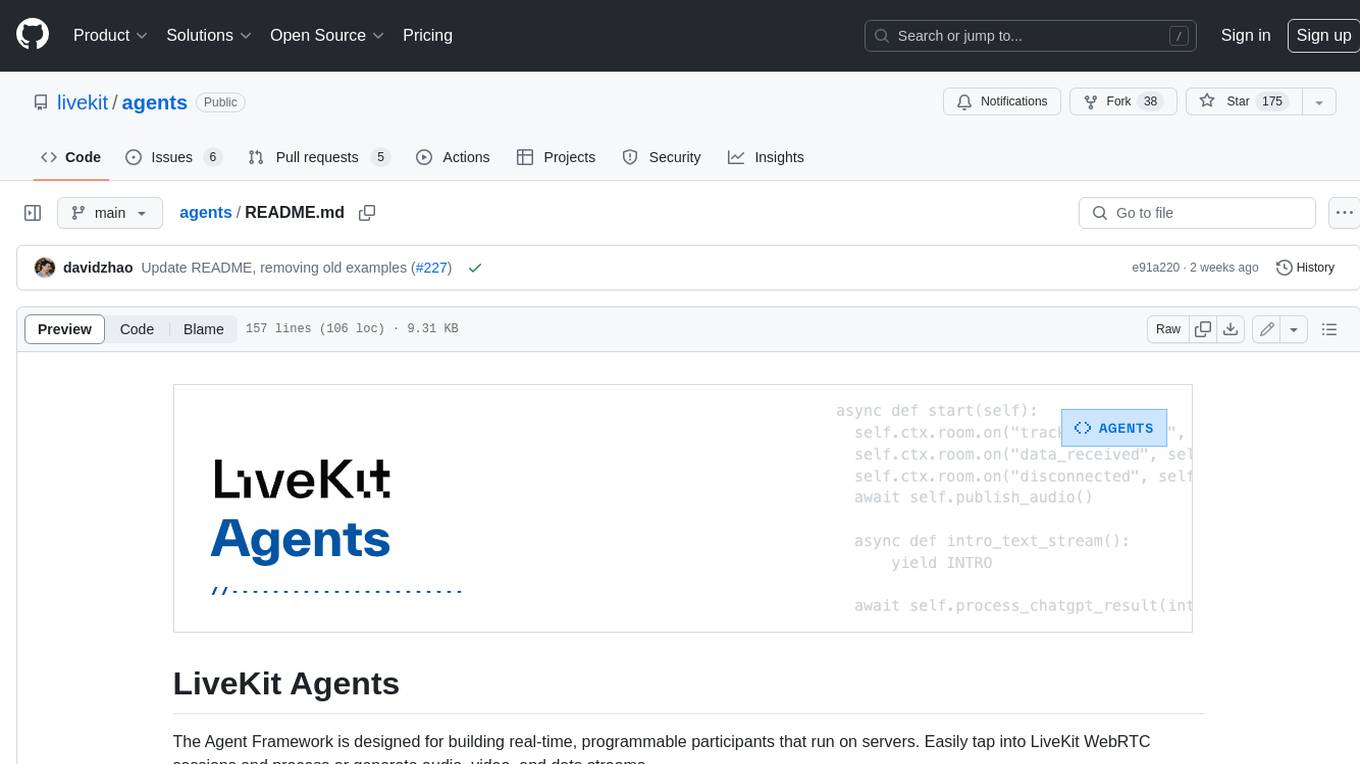
The LiveKit Agent Framework is designed for building real-time, programmable participants that run on servers. Easily tap into LiveKit WebRTC sessions and process or generate audio, video, and data streams. The framework includes plugins for common workflows, such as voice activity detection and speech-to-text. Agents integrates seamlessly with LiveKit server, offloading job queuing and scheduling responsibilities to it. This eliminates the need for additional queuing infrastructure. Agent code developed on your local machine can scale to support thousands of concurrent sessions when deployed to a server in production.
README:
Looking for the JS/TS library? Check out AgentsJS
The Agent Framework is designed for building realtime, programmable participants that run on servers. Use it to create conversational, multi-modal voice agents that can see, hear, and understand.
- Flexible integrations: A comprehensive ecosystem to mix and match the right STT, LLM, TTS, and Realtime API to suit your use case.
- Integrated job scheduling: Built-in task scheduling and distribution with dispatch APIs to connect end users to agents.
- Extensive WebRTC clients: Build client applications using LiveKit's open-source SDK ecosystem, supporting all major platforms.
- Telephony integration: Works seamlessly with LiveKit's telephony stack, allowing your agent to make calls to or receive calls from phones.
- Exchange data with clients: Use RPCs and other Data APIs to seamlessly exchange data with clients.
- Semantic turn detection: Uses a transformer model to detect when a user is done with their turn, helps to reduce interruptions.
- MCP support: Native support for MCP. Integrate tools provided by MCP servers with one loc.
- Builtin test framework: Write tests and use judges to ensure your agent is performing as expected.
- Open-source: Fully open-source, allowing you to run the entire stack on your own servers, including LiveKit server, one of the most widely used WebRTC media servers.
To install the core Agents library, along with plugins for popular model providers:
pip install "livekit-agents[openai,silero,deepgram,cartesia,turn-detector]~=1.0"Documentation on the framework and how to use it can be found here
- Agent: An LLM-based application with defined instructions.
- AgentSession: A container for agents that manages interactions with end users.
- entrypoint: The starting point for an interactive session, similar to a request handler in a web server.
- Worker: The main process that coordinates job scheduling and launches agents for user sessions.
from livekit.agents import (
Agent,
AgentSession,
JobContext,
RunContext,
WorkerOptions,
cli,
function_tool,
)
from livekit.plugins import deepgram, elevenlabs, openai, silero
@function_tool
async def lookup_weather(
context: RunContext,
location: str,
):
"""Used to look up weather information."""
return {"weather": "sunny", "temperature": 70}
async def entrypoint(ctx: JobContext):
await ctx.connect()
agent = Agent(
instructions="You are a friendly voice assistant built by LiveKit.",
tools=[lookup_weather],
)
session = AgentSession(
vad=silero.VAD.load(),
# any combination of STT, LLM, TTS, or realtime API can be used
stt=deepgram.STT(model="nova-3"),
llm=openai.LLM(model="gpt-4o-mini"),
tts=elevenlabs.TTS(),
)
await session.start(agent=agent, room=ctx.room)
await session.generate_reply(instructions="greet the user and ask about their day")
if __name__ == "__main__":
cli.run_app(WorkerOptions(entrypoint_fnc=entrypoint))You'll need the following environment variables for this example:
- DEEPGRAM_API_KEY
- OPENAI_API_KEY
- ELEVEN_API_KEY
This code snippet is abbreviated. For the full example, see multi_agent.py
...
class IntroAgent(Agent):
def __init__(self) -> None:
super().__init__(
instructions=f"You are a story teller. Your goal is to gather a few pieces of information from the user to make the story personalized and engaging."
"Ask the user for their name and where they are from"
)
async def on_enter(self):
self.session.generate_reply(instructions="greet the user and gather information")
@function_tool
async def information_gathered(
self,
context: RunContext,
name: str,
location: str,
):
"""Called when the user has provided the information needed to make the story personalized and engaging.
Args:
name: The name of the user
location: The location of the user
"""
context.userdata.name = name
context.userdata.location = location
story_agent = StoryAgent(name, location)
return story_agent, "Let's start the story!"
class StoryAgent(Agent):
def __init__(self, name: str, location: str) -> None:
super().__init__(
instructions=f"You are a storyteller. Use the user's information in order to make the story personalized."
f"The user's name is {name}, from {location}"
# override the default model, switching to Realtime API from standard LLMs
llm=openai.realtime.RealtimeModel(voice="echo"),
chat_ctx=chat_ctx,
)
async def on_enter(self):
self.session.generate_reply()
async def entrypoint(ctx: JobContext):
await ctx.connect()
userdata = StoryData()
session = AgentSession[StoryData](
vad=silero.VAD.load(),
stt=deepgram.STT(model="nova-3"),
llm=openai.LLM(model="gpt-4o-mini"),
tts=openai.TTS(voice="echo"),
userdata=userdata,
)
await session.start(
agent=IntroAgent(),
room=ctx.room,
)
...Automated tests are essential for building reliable agents, especially with the non-deterministic behavior of LLMs. LiveKit Agents include native test integration to help you create dependable agents.
@pytest.mark.asyncio
async def test_no_availability() -> None:
llm = google.LLM()
async AgentSession(llm=llm) as sess:
await sess.start(MyAgent())
result = await sess.run(
user_input="Hello, I need to place an order."
)
result.expect.skip_next_event_if(type="message", role="assistant")
result.expect.next_event().is_function_call(name="start_order")
result.expect.next_event().is_function_call_output()
await (
result.expect.next_event()
.is_message(role="assistant")
.judge(llm, intent="assistant should be asking the user what they would like")
)|
A starter agent optimized for voice conversations. |
Responds to multiple users in the room via push-to-talk. |
|
Background ambient and thinking audio to improve realism. |
Creating function tools dynamically. |
|
Agent that makes outbound phone calls |
Using structured output from LLM to guide TTS tone. |
|
Use tools from MCP servers |
Skip voice altogether and use the same code for text-only integrations |
|
Produce transcriptions from all users in the room |
Add an AI avatar with Tavus, Beyond Presence, and Bithuman |
|
Full example of an agent that handles calls for a restaurant. |
Full example (including iOS app) of Gemini Live agent that can see. |
python myagent.py consoleRuns your agent in terminal mode, enabling local audio input and output for testing. This mode doesn't require external servers or dependencies and is useful for quickly validating behavior.
python myagent.py devStarts the agent server and enables hot reloading when files change. This mode allows each process to host multiple concurrent agents efficiently.
The agent connects to LiveKit Cloud or your self-hosted server. Set the following environment variables:
- LIVEKIT_URL
- LIVEKIT_API_KEY
- LIVEKIT_API_SECRET
You can connect using any LiveKit client SDK or telephony integration. To get started quickly, try the Agents Playground.
python myagent.py startRuns the agent with production-ready optimizations.
The Agents framework is under active development in a rapidly evolving field. We welcome and appreciate contributions of any kind, be it feedback, bugfixes, features, new plugins and tools, or better documentation. You can file issues under this repo, open a PR, or chat with us in LiveKit's Slack community.
| LiveKit Ecosystem | |
|---|---|
| LiveKit SDKs | Browser · iOS/macOS/visionOS · Android · Flutter · React Native · Rust · Node.js · Python · Unity · Unity (WebGL) · ESP32 |
| Server APIs | Node.js · Golang · Ruby · Java/Kotlin · Python · Rust · PHP (community) · .NET (community) |
| UI Components | React · Android Compose · SwiftUI · Flutter |
| Agents Frameworks | Python · Node.js · Playground |
| Services | LiveKit server · Egress · Ingress · SIP |
| Resources | Docs · Example apps · Cloud · Self-hosting · CLI |
For Tasks:
Click tags to check more tools for each tasksFor Jobs:
Alternative AI tools for agents
Similar Open Source Tools

agents
The LiveKit Agent Framework is designed for building real-time, programmable participants that run on servers. Easily tap into LiveKit WebRTC sessions and process or generate audio, video, and data streams. The framework includes plugins for common workflows, such as voice activity detection and speech-to-text. Agents integrates seamlessly with LiveKit server, offloading job queuing and scheduling responsibilities to it. This eliminates the need for additional queuing infrastructure. Agent code developed on your local machine can scale to support thousands of concurrent sessions when deployed to a server in production.
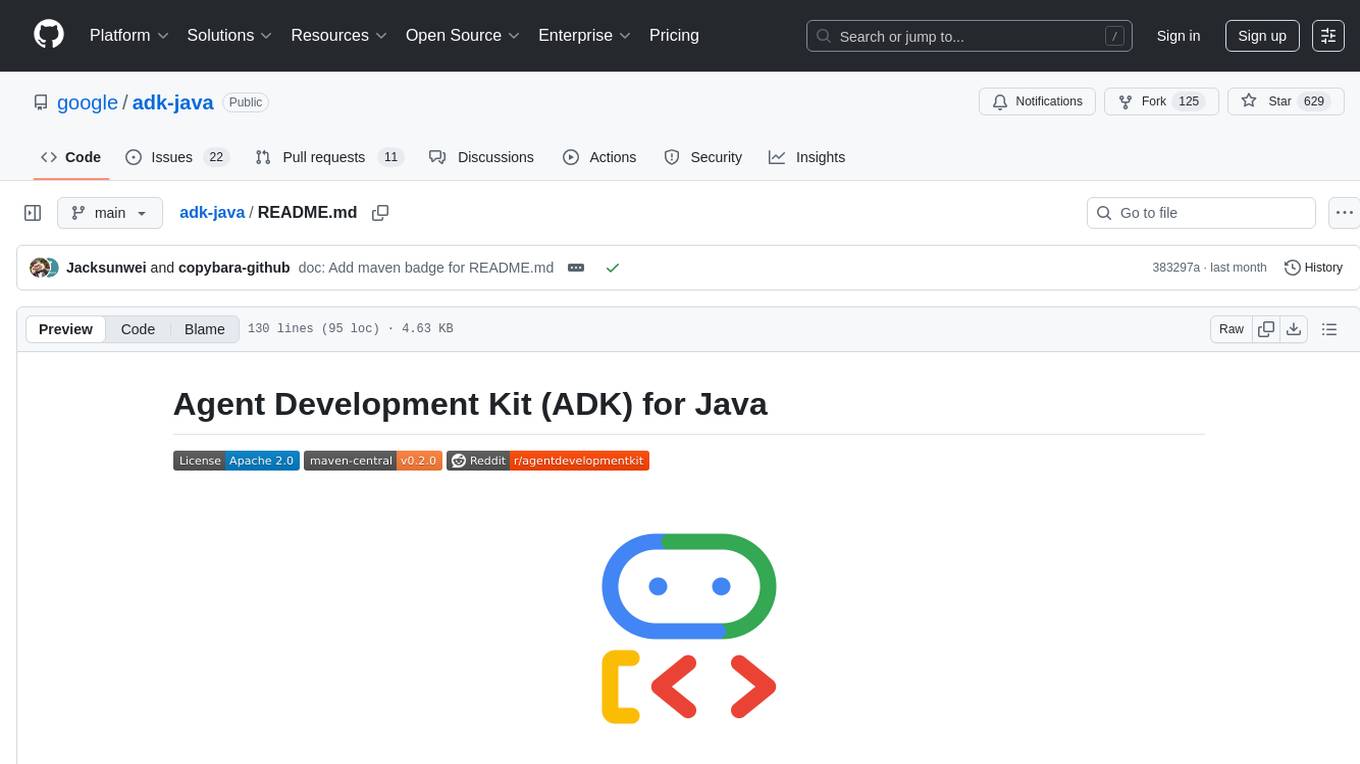
adk-java
Agent Development Kit (ADK) for Java is an open-source toolkit designed for developers to build, evaluate, and deploy sophisticated AI agents with flexibility and control. It allows defining agent behavior, orchestration, and tool use directly in code, enabling robust debugging, versioning, and deployment anywhere. The toolkit offers a rich tool ecosystem, code-first development approach, and support for modular multi-agent systems, making it ideal for creating advanced AI agents integrated with Google Cloud services.

weave
Weave is a toolkit for developing Generative AI applications, built by Weights & Biases. With Weave, you can log and debug language model inputs, outputs, and traces; build rigorous, apples-to-apples evaluations for language model use cases; and organize all the information generated across the LLM workflow, from experimentation to evaluations to production. Weave aims to bring rigor, best-practices, and composability to the inherently experimental process of developing Generative AI software, without introducing cognitive overhead.
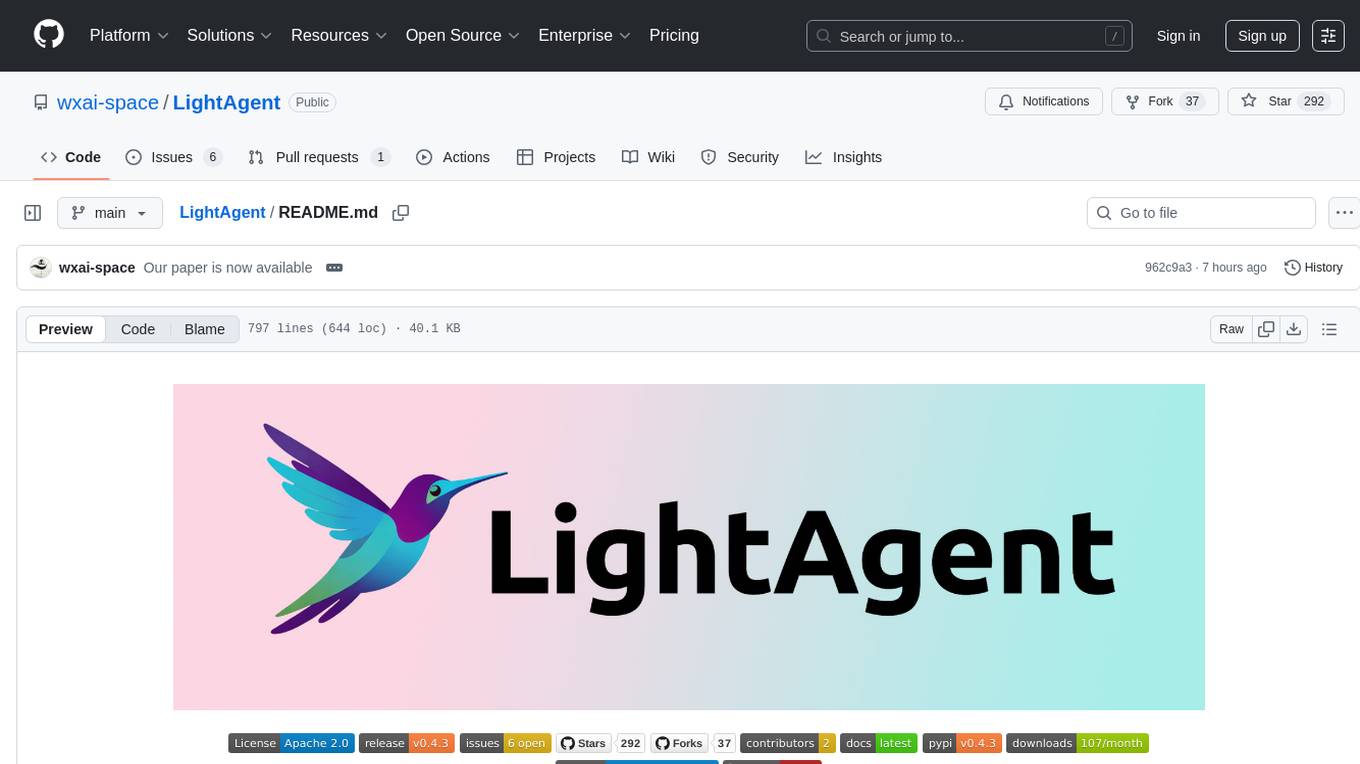
LightAgent
LightAgent is a lightweight, open-source Agentic AI development framework with memory, tools, and a tree of thought. It supports multi-agent collaboration, autonomous learning, tool integration, complex task handling, and multi-model support. It also features a streaming API, tool generator, agent self-learning, adaptive tool mechanism, and more. LightAgent is designed for intelligent customer service, data analysis, automated tools, and educational assistance.
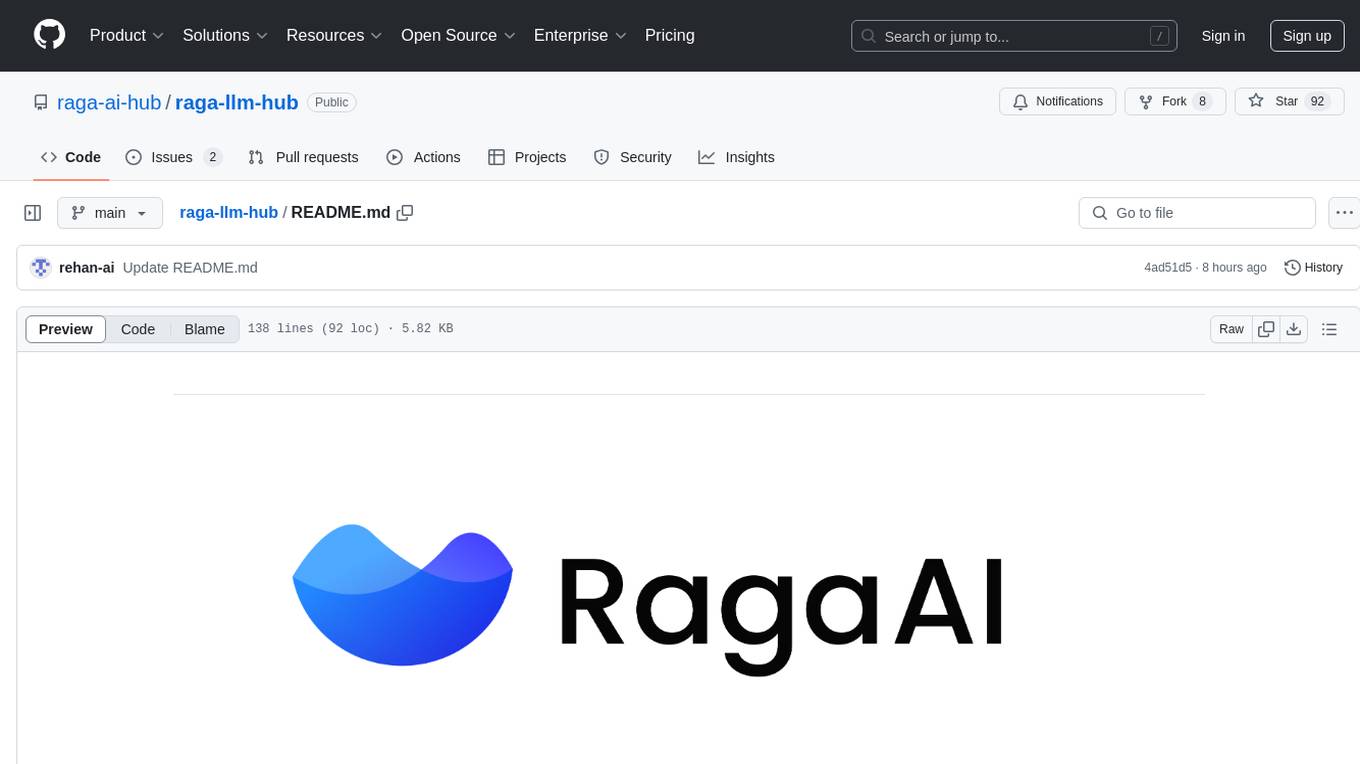
raga-llm-hub
Raga LLM Hub is a comprehensive evaluation toolkit for Language and Learning Models (LLMs) with over 100 meticulously designed metrics. It allows developers and organizations to evaluate and compare LLMs effectively, establishing guardrails for LLMs and Retrieval Augmented Generation (RAG) applications. The platform assesses aspects like Relevance & Understanding, Content Quality, Hallucination, Safety & Bias, Context Relevance, Guardrails, and Vulnerability scanning, along with Metric-Based Tests for quantitative analysis. It helps teams identify and fix issues throughout the LLM lifecycle, revolutionizing reliability and trustworthiness.
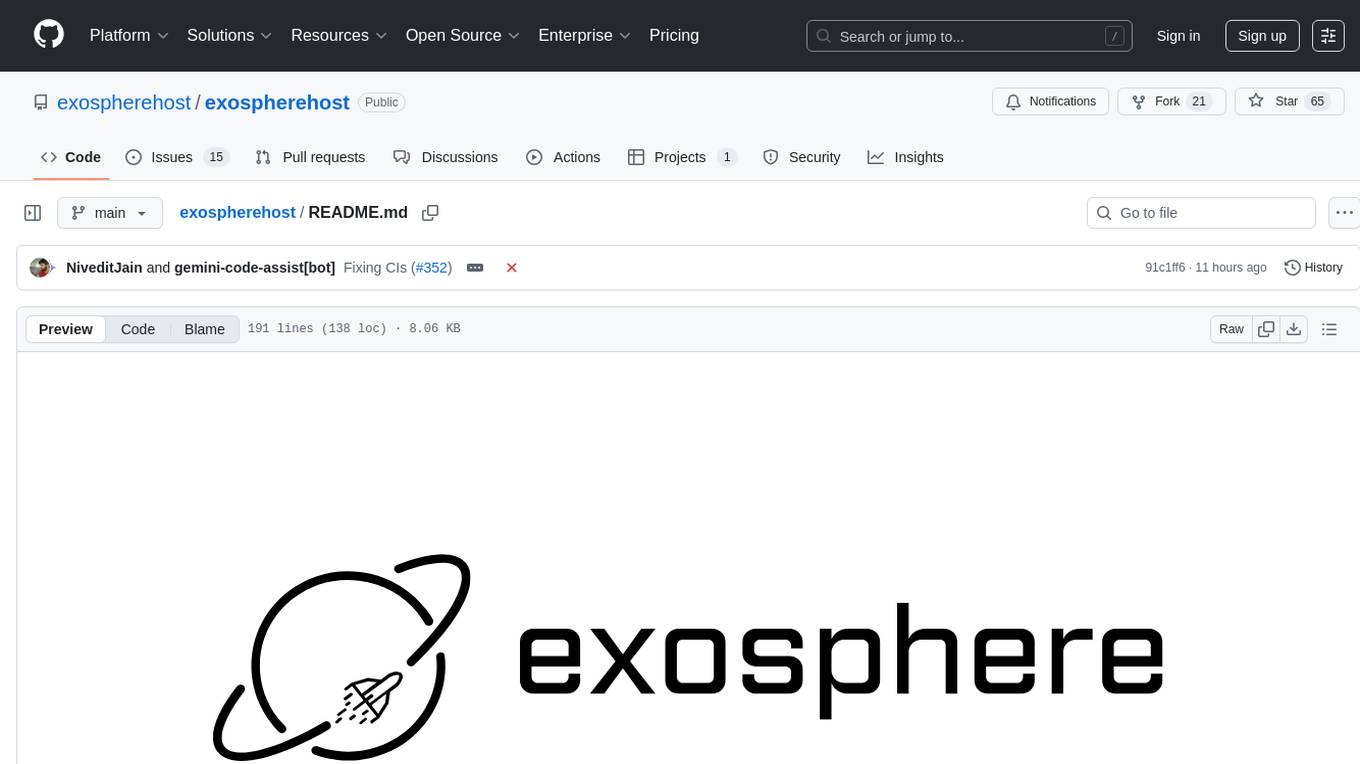
exospherehost
Exosphere is an open source infrastructure designed to run AI agents at scale for large data and long running flows. It allows developers to define plug and playable nodes that can be run on a reliable backbone in the form of a workflow, with features like dynamic state creation at runtime, infinite parallel agents, persistent state management, and failure handling. This enables the deployment of production agents that can scale beautifully to build robust autonomous AI workflows.
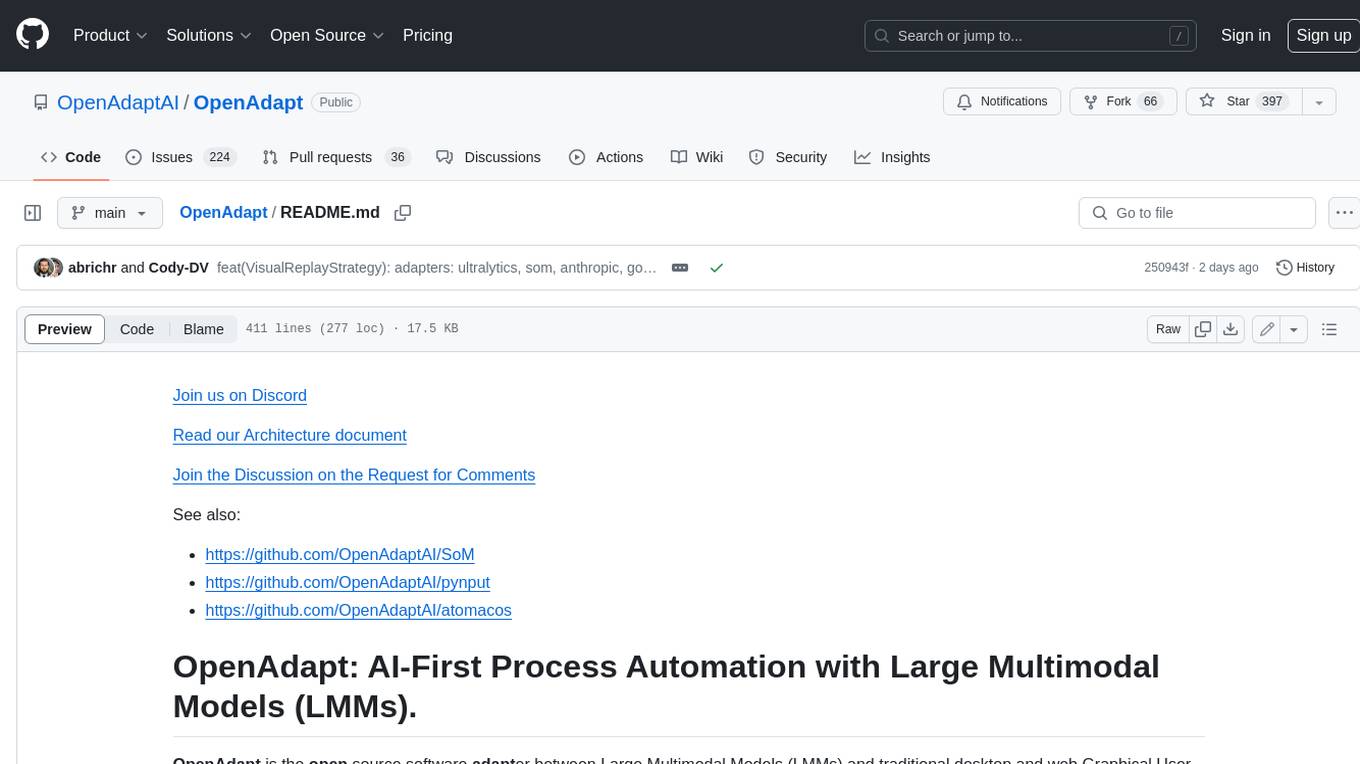
OpenAdapt
OpenAdapt is an open-source software adapter between Large Multimodal Models (LMMs) and traditional desktop and web Graphical User Interfaces (GUIs). It aims to automate repetitive GUI workflows by leveraging the power of LMMs. OpenAdapt records user input and screenshots, converts them into tokenized format, and generates synthetic input via transformer model completions. It also analyzes recordings to generate task trees and replay synthetic input to complete tasks. OpenAdapt is model agnostic and generates prompts automatically by learning from human demonstration, ensuring that agents are grounded in existing processes and mitigating hallucinations. It works with all types of desktop GUIs, including virtualized and web, and is open source under the MIT license.
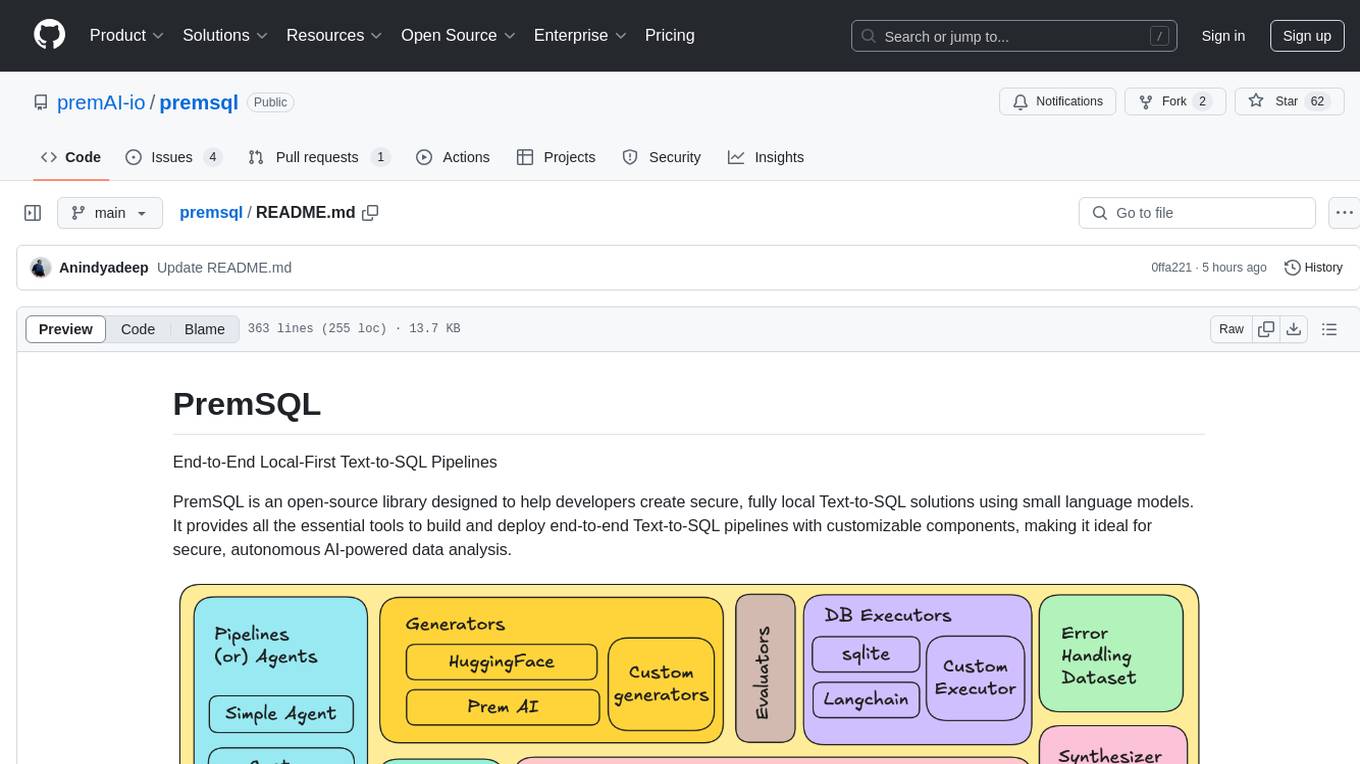
premsql
PremSQL is an open-source library designed to help developers create secure, fully local Text-to-SQL solutions using small language models. It provides essential tools for building and deploying end-to-end Text-to-SQL pipelines with customizable components, ideal for secure, autonomous AI-powered data analysis. The library offers features like Local-First approach, Customizable Datasets, Robust Executors and Evaluators, Advanced Generators, Error Handling and Self-Correction, Fine-Tuning Support, and End-to-End Pipelines. Users can fine-tune models, generate SQL queries from natural language inputs, handle errors, and evaluate model performance against predefined metrics. PremSQL is extendible for customization and private data usage.

AIL-framework
AIL framework is a modular framework to analyze potential information leaks from unstructured data sources like pastes from Pastebin or similar services or unstructured data streams. AIL framework is flexible and can be extended to support other functionalities to mine or process sensitive information (e.g. data leak prevention).
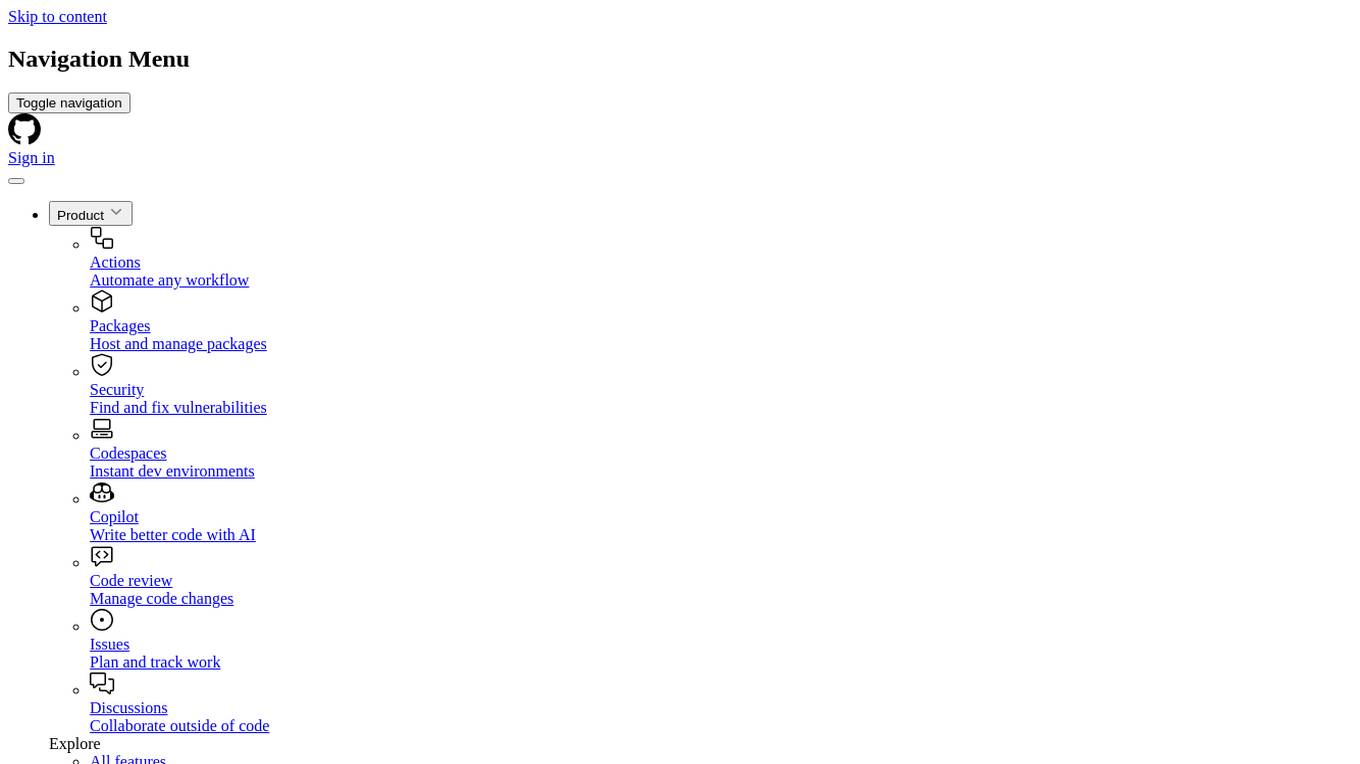
ail-framework
AIL framework is a modular framework to analyze potential information leaks from unstructured data sources like pastes from Pastebin or similar services or unstructured data streams. AIL framework is flexible and can be extended to support other functionalities to mine or process sensitive information (e.g. data leak prevention).
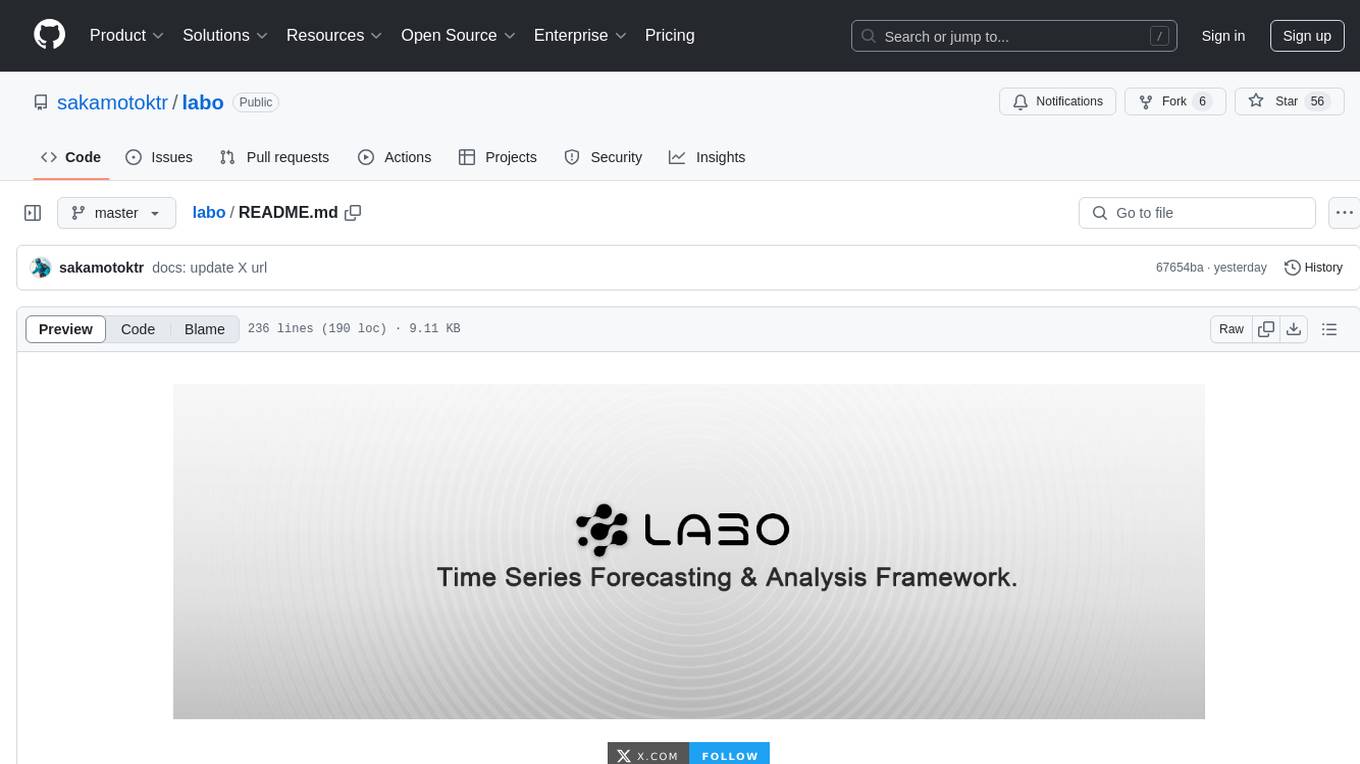
labo
LABO is a time series forecasting and analysis framework that integrates pre-trained and fine-tuned LLMs with multi-domain agent-based systems. It allows users to create and tune agents easily for various scenarios, such as stock market trend prediction and web public opinion analysis. LABO requires a specific runtime environment setup, including system requirements, Python environment, dependency installations, and configurations. Users can fine-tune their own models using LABO's Low-Rank Adaptation (LoRA) for computational efficiency and continuous model updates. Additionally, LABO provides a Python library for building model training pipelines and customizing agents for specific tasks.
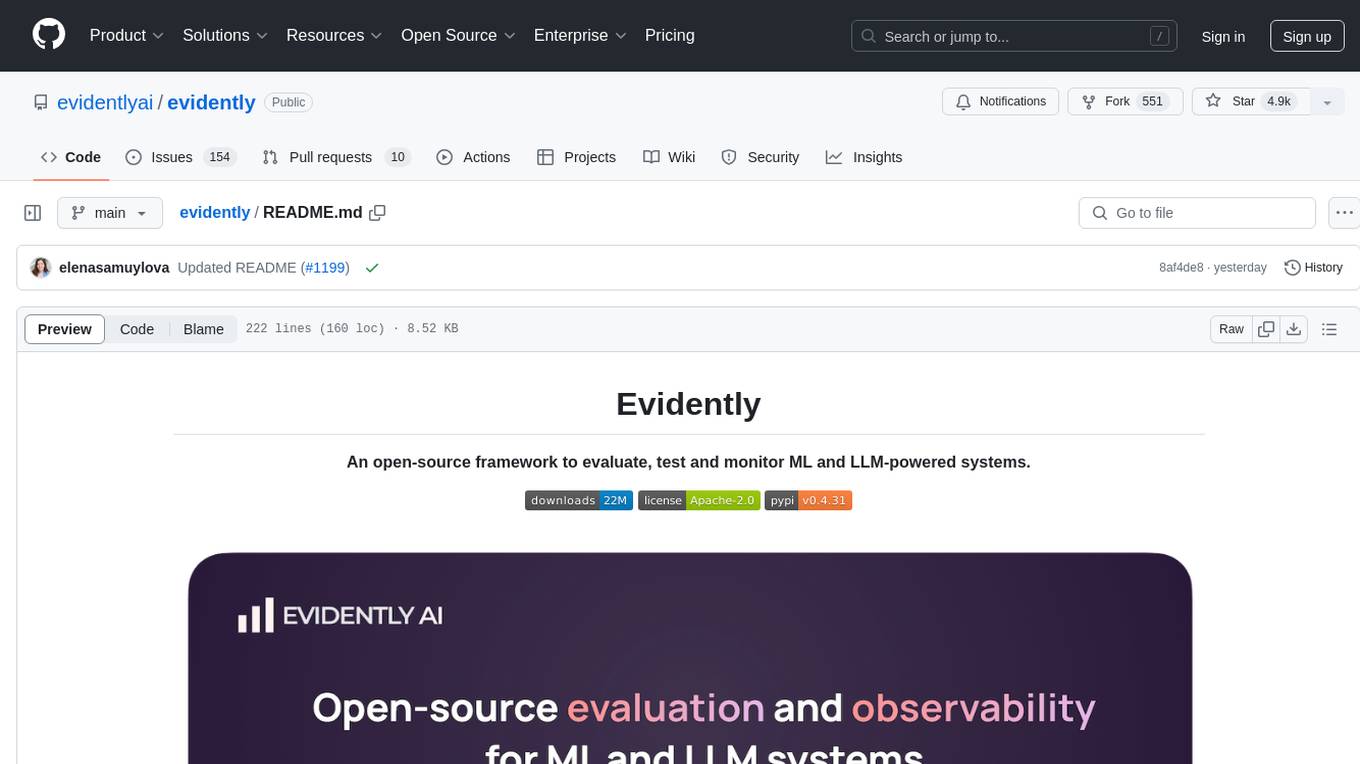
evidently
Evidently is an open-source Python library designed for evaluating, testing, and monitoring machine learning (ML) and large language model (LLM) powered systems. It offers a wide range of functionalities, including working with tabular, text data, and embeddings, supporting predictive and generative systems, providing over 100 built-in metrics for data drift detection and LLM evaluation, allowing for custom metrics and tests, enabling both offline evaluations and live monitoring, and offering an open architecture for easy data export and integration with existing tools. Users can utilize Evidently for one-off evaluations using Reports or Test Suites in Python, or opt for real-time monitoring through the Dashboard service.
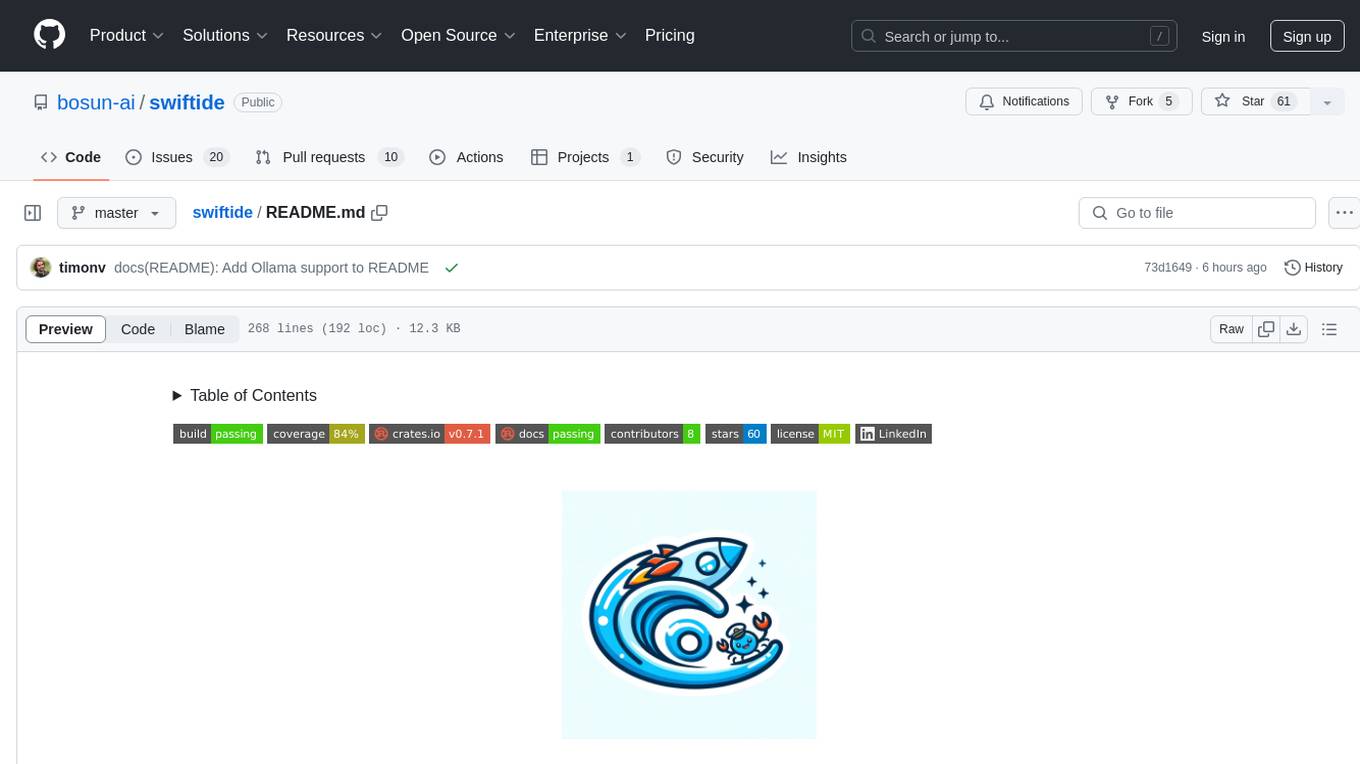
swiftide
Swiftide is a fast, streaming indexing and query library tailored for Retrieval Augmented Generation (RAG) in AI applications. It is built in Rust, utilizing parallel, asynchronous streams for blazingly fast performance. With Swiftide, users can easily build AI applications from idea to production in just a few lines of code. The tool addresses frustrations around performance, stability, and ease of use encountered while working with Python-based tooling. It offers features like fast streaming indexing pipeline, experimental query pipeline, integrations with various platforms, loaders, transformers, chunkers, embedders, and more. Swiftide aims to provide a platform for data indexing and querying to advance the development of automated Large Language Model (LLM) applications.
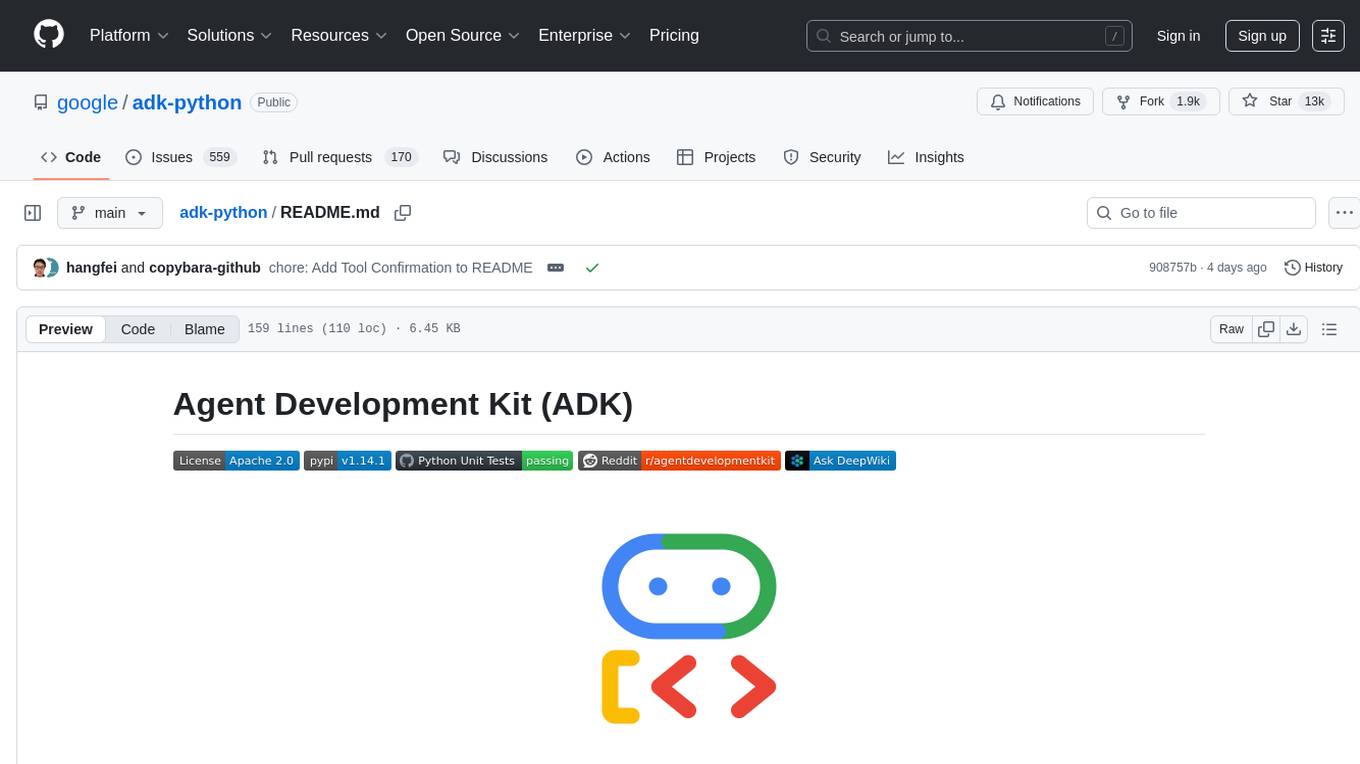
adk-python
Agent Development Kit (ADK) is an open-source, code-first Python toolkit for building, evaluating, and deploying sophisticated AI agents with flexibility and control. It is a flexible and modular framework optimized for Gemini and the Google ecosystem, but also compatible with other frameworks. ADK aims to make agent development feel more like software development, enabling developers to create, deploy, and orchestrate agentic architectures ranging from simple tasks to complex workflows.
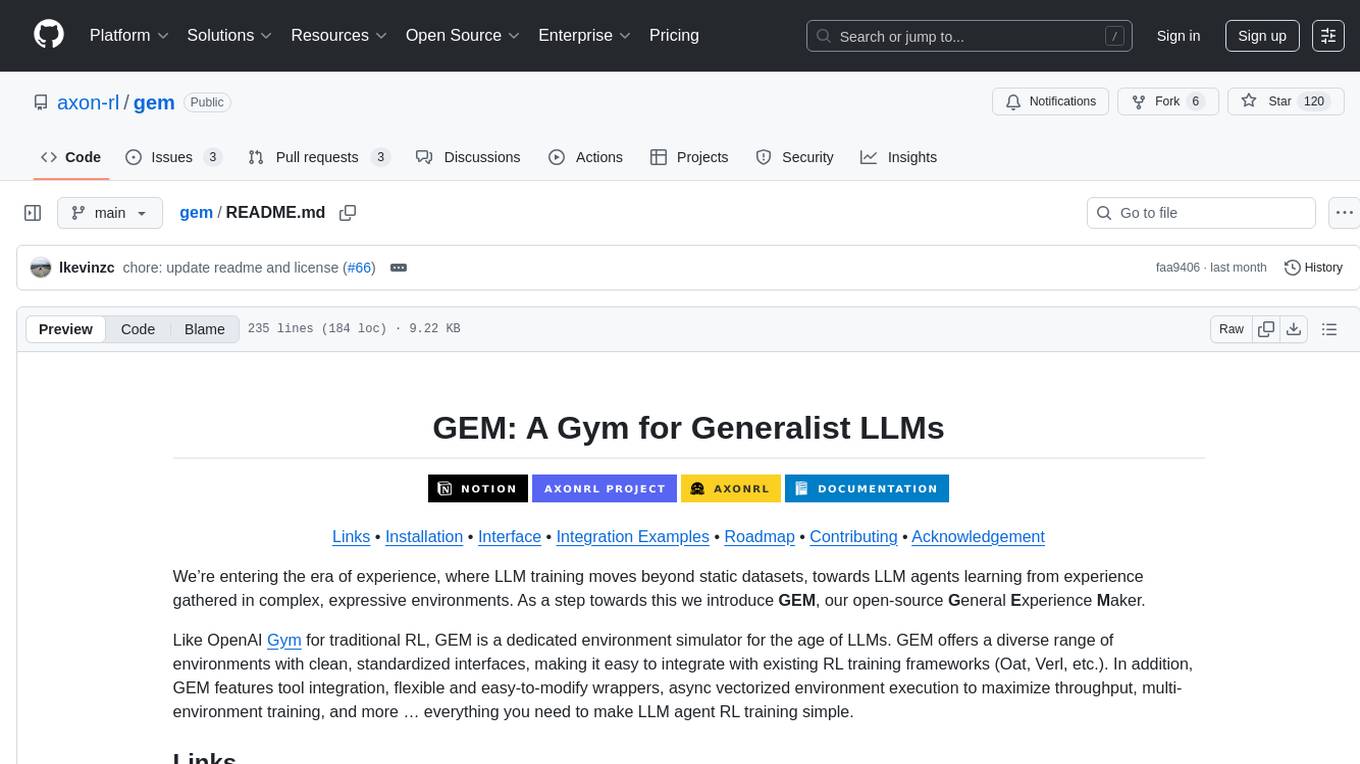
gem
GEM is an open-source General Experience Maker designed for training Large Language Models (LLMs) in dynamic environments. Similar to OpenAI Gym for traditional Reinforcement Learning, GEM provides a variety of environments with standardized interfaces for seamless integration with existing LLM training frameworks. It offers tool integration, flexible wrappers, async vectorized environment execution, multi-environment training, and more to simplify LLM agent training.
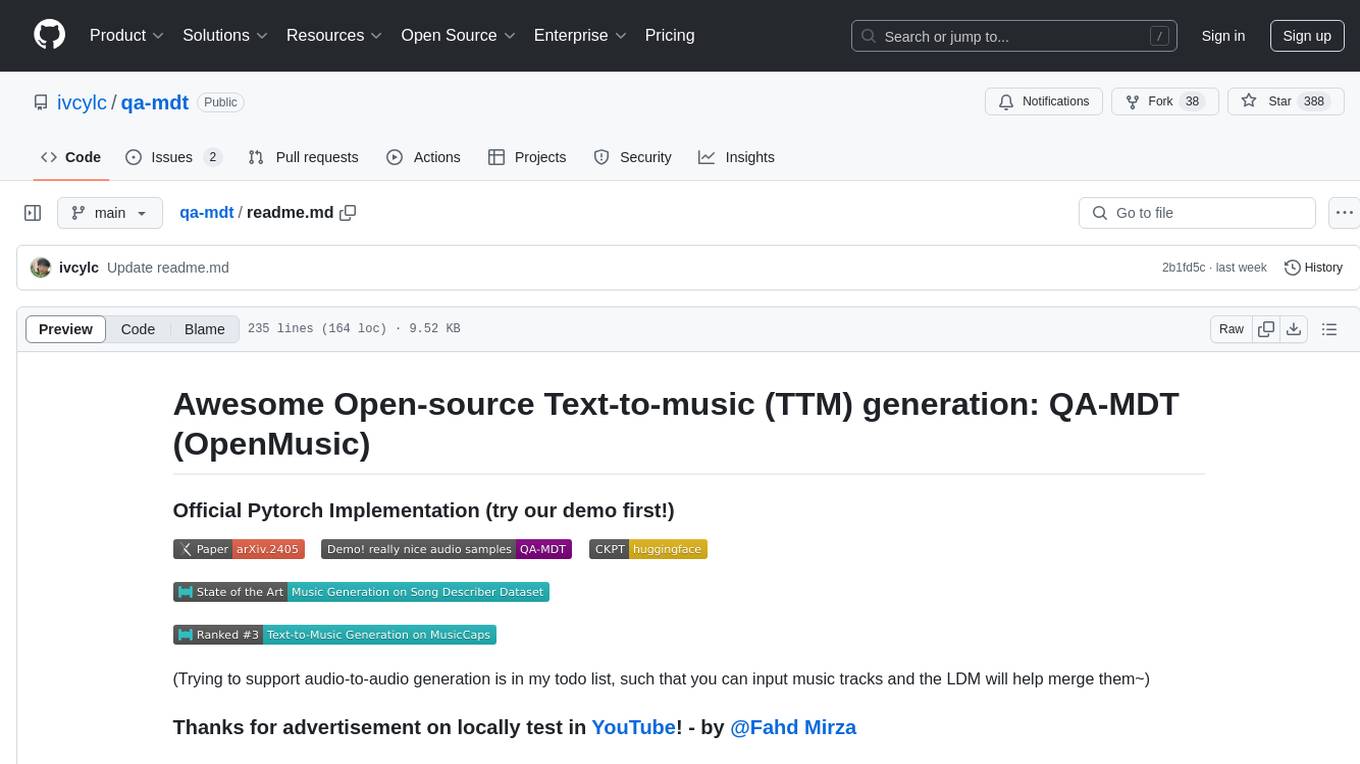
qa-mdt
This repository provides an implementation of QA-MDT, integrating state-of-the-art models for music generation. It offers a Quality-Aware Masked Diffusion Transformer for enhanced music generation. The code is based on various repositories like AudioLDM, PixArt-alpha, MDT, AudioMAE, and Open-Sora. The implementation allows for training and fine-tuning the model with different strategies and datasets. The repository also includes instructions for preparing datasets in LMDB format and provides a script for creating a toy LMDB dataset. The model can be used for music generation tasks, with a focus on quality injection to enhance the musicality of generated music.
For similar tasks

agents
The LiveKit Agent Framework is designed for building real-time, programmable participants that run on servers. Easily tap into LiveKit WebRTC sessions and process or generate audio, video, and data streams. The framework includes plugins for common workflows, such as voice activity detection and speech-to-text. Agents integrates seamlessly with LiveKit server, offloading job queuing and scheduling responsibilities to it. This eliminates the need for additional queuing infrastructure. Agent code developed on your local machine can scale to support thousands of concurrent sessions when deployed to a server in production.
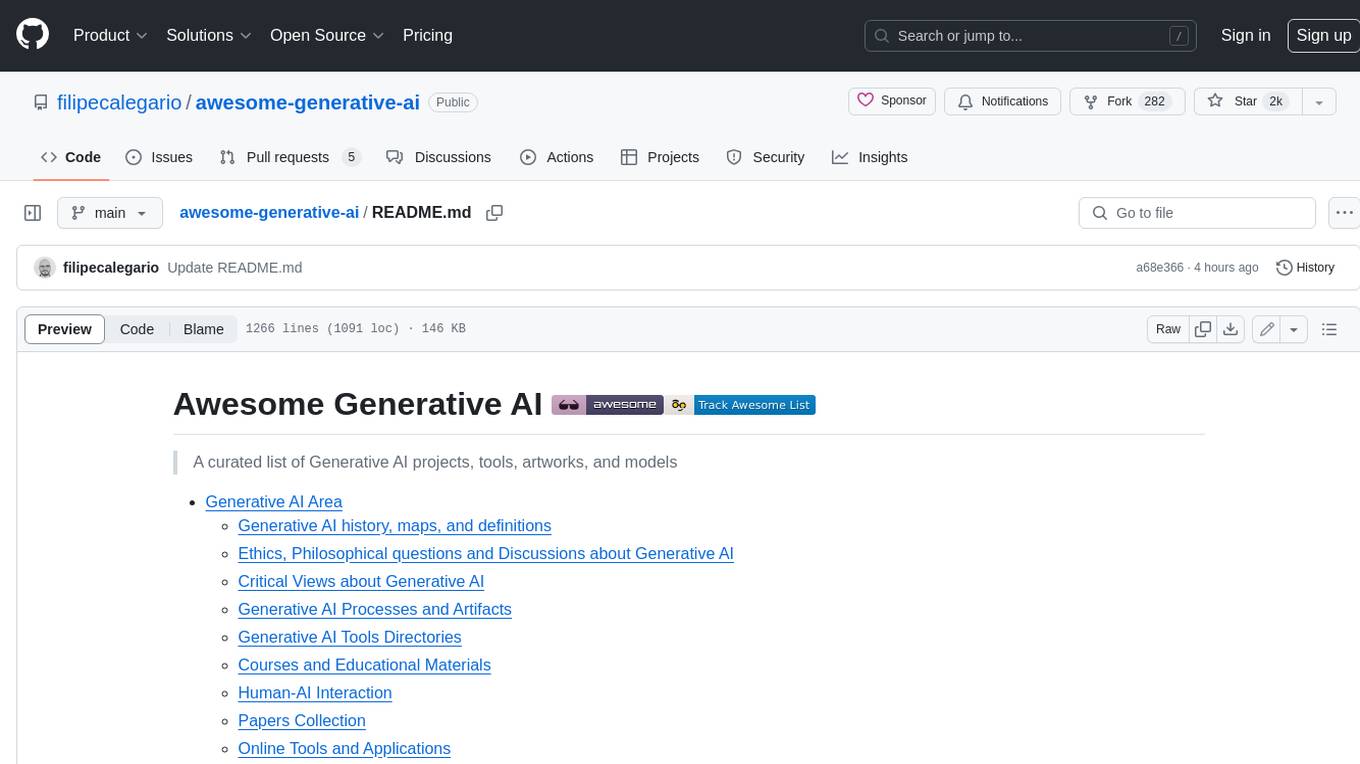
awesome-generative-ai
A curated list of Generative AI projects, tools, artworks, and models
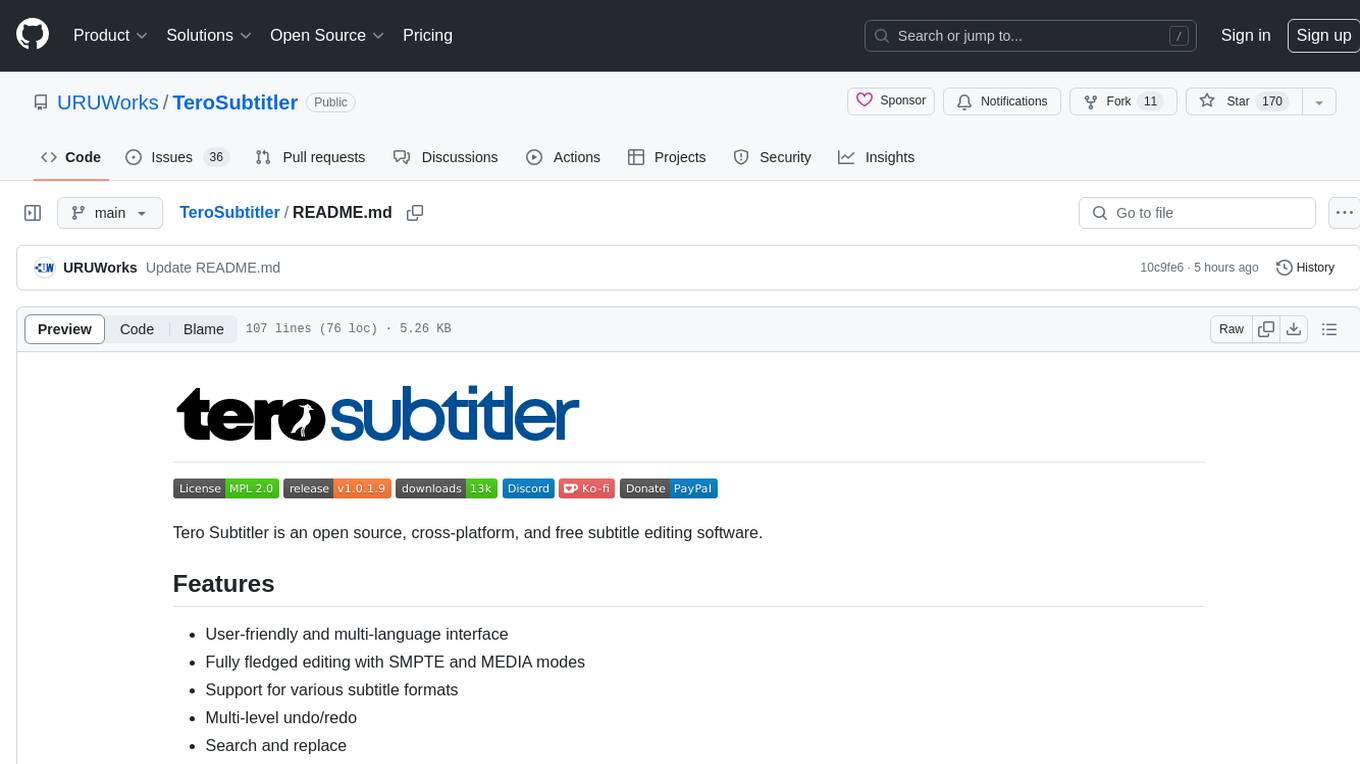
TeroSubtitler
Tero Subtitler is an open source, cross-platform, and free subtitle editing software with a user-friendly interface. It offers fully fledged editing with SMPTE and MEDIA modes, support for various subtitle formats, multi-level undo/redo, search and replace, auto-backup, source and transcription modes, translation memory, audiovisual preview, timeline with waveform visualizer, manipulation tools, formatting options, quality control features, translation and transcription capabilities, validation tools, automation for correcting errors, and more. It also includes features like exporting subtitles to MP3, importing/exporting Blu-ray SUP format, generating blank video, generating video with hardcoded subtitles, video dubbing, and more. The tool utilizes powerful multimedia playback engines like mpv, advanced audio/video manipulation tools like FFmpeg, tools for automatic transcription like whisper.cpp/Faster-Whisper, auto-translation API like Google Translate, and ElevenLabs TTS for video dubbing.
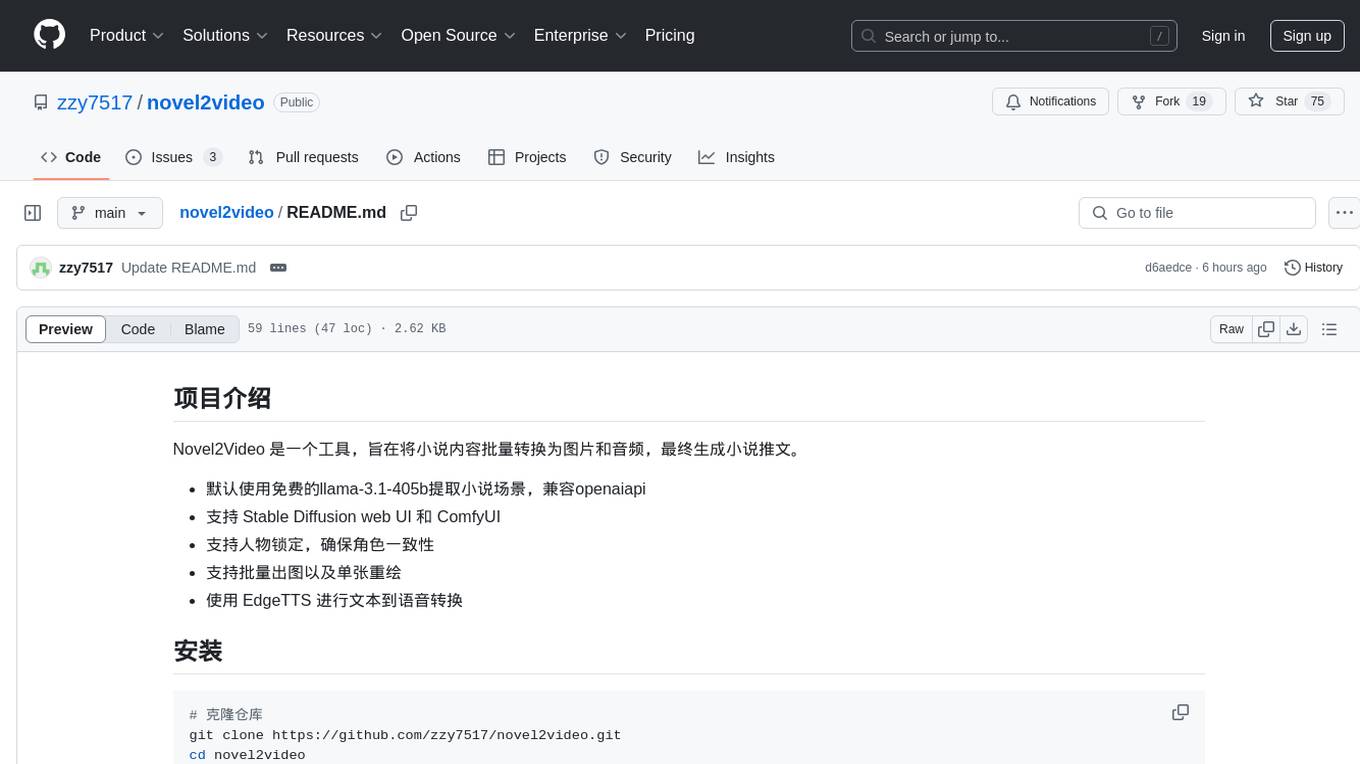
novel2video
Novel2Video is a tool designed to batch convert novel content into images and audio, ultimately generating novel tweets. It uses llama-3.1-405b for extracting novel scenes, compatible with openaiapi. It supports Stable Diffusion web UI and ComfyUI, character locking for consistency, batch image output, single image redraw, and EdgeTTS for text-to-speech conversion.
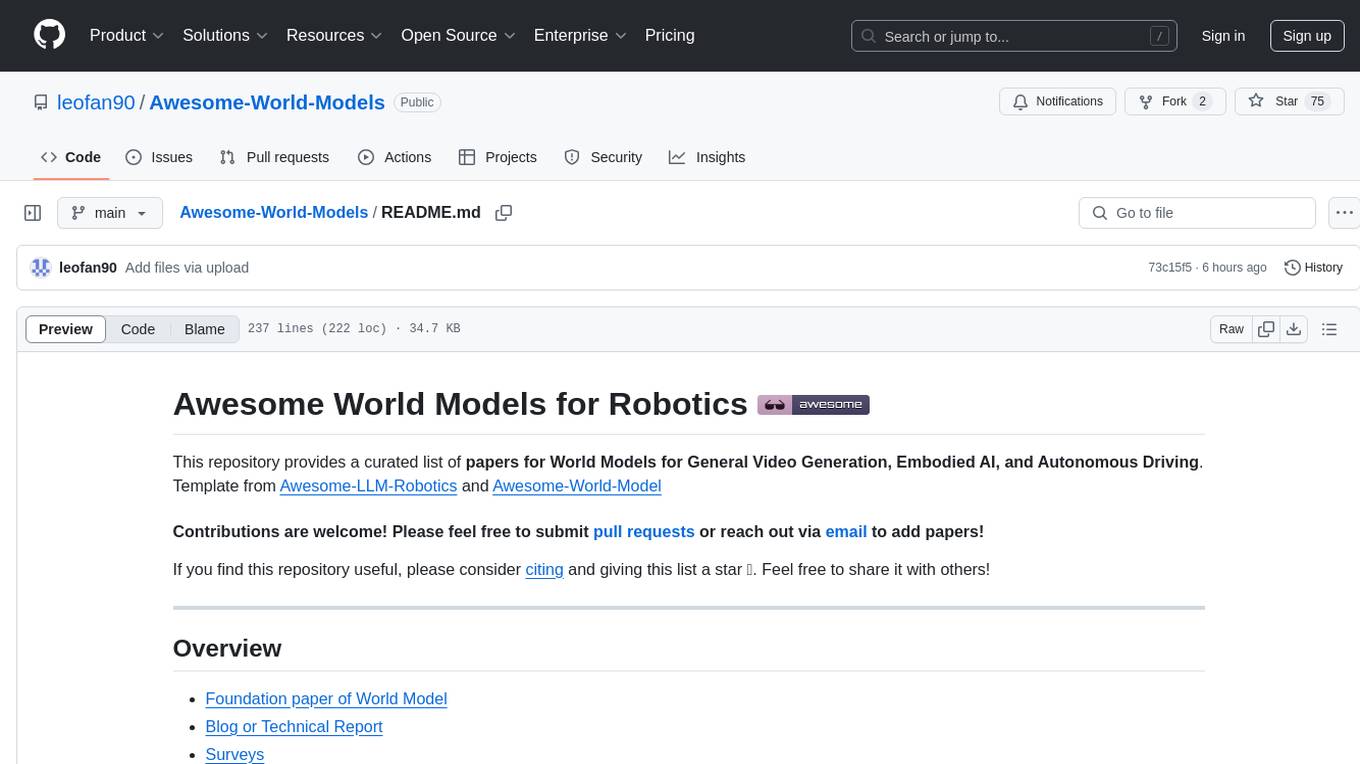
Awesome-World-Models
This repository is a curated list of papers related to World Models for General Video Generation, Embodied AI, and Autonomous Driving. It includes foundation papers, blog posts, technical reports, surveys, benchmarks, and specific world models for different applications. The repository serves as a valuable resource for researchers and practitioners interested in world models and their applications in robotics and AI.
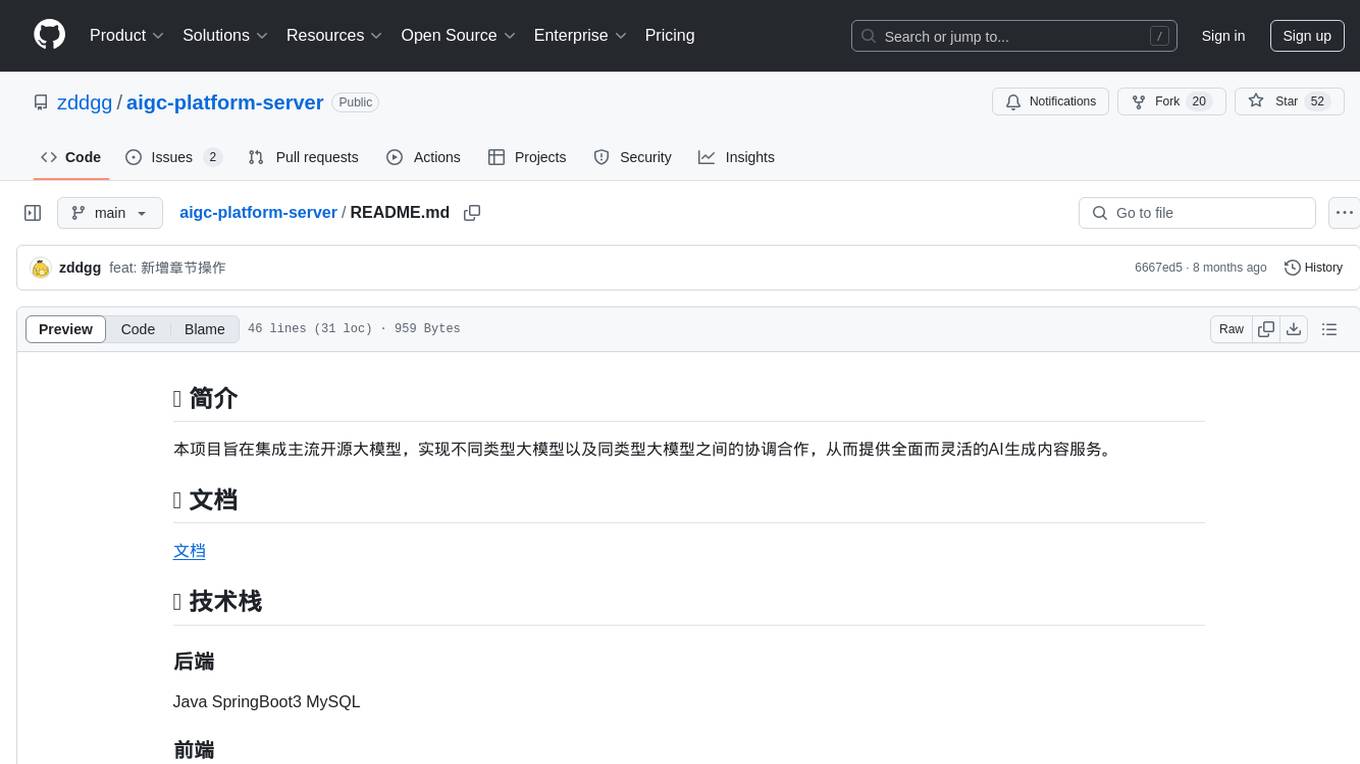
aigc-platform-server
This project aims to integrate mainstream open-source large models to achieve the coordination and cooperation between different types of large models, providing comprehensive and flexible AI content generation services.
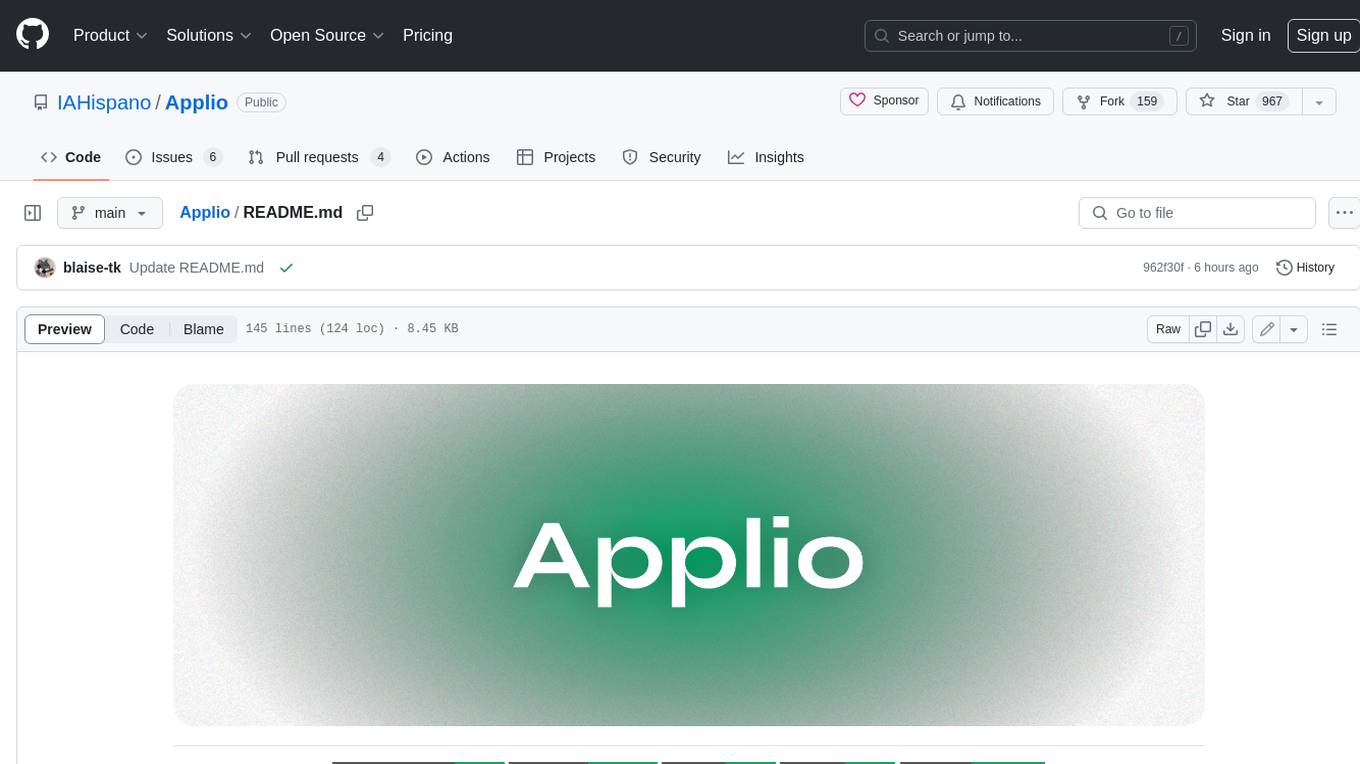
Applio
Applio is a VITS-based Voice Conversion tool focused on simplicity, quality, and performance. It features a user-friendly interface, cross-platform compatibility, and a range of customization options. Applio is suitable for various tasks such as voice cloning, voice conversion, and audio editing. Its key features include a modular codebase, hop length implementation, translations in over 30 languages, optimized requirements, streamlined installation, hybrid F0 estimation, easy-to-use UI, optimized code and dependencies, plugin system, overtraining detector, model search, enhancements in pretrained models, voice blender, accessibility improvements, new F0 extraction methods, output format selection, hashing system, model download system, TTS enhancements, split audio, Discord presence, Flask integration, and support tab.
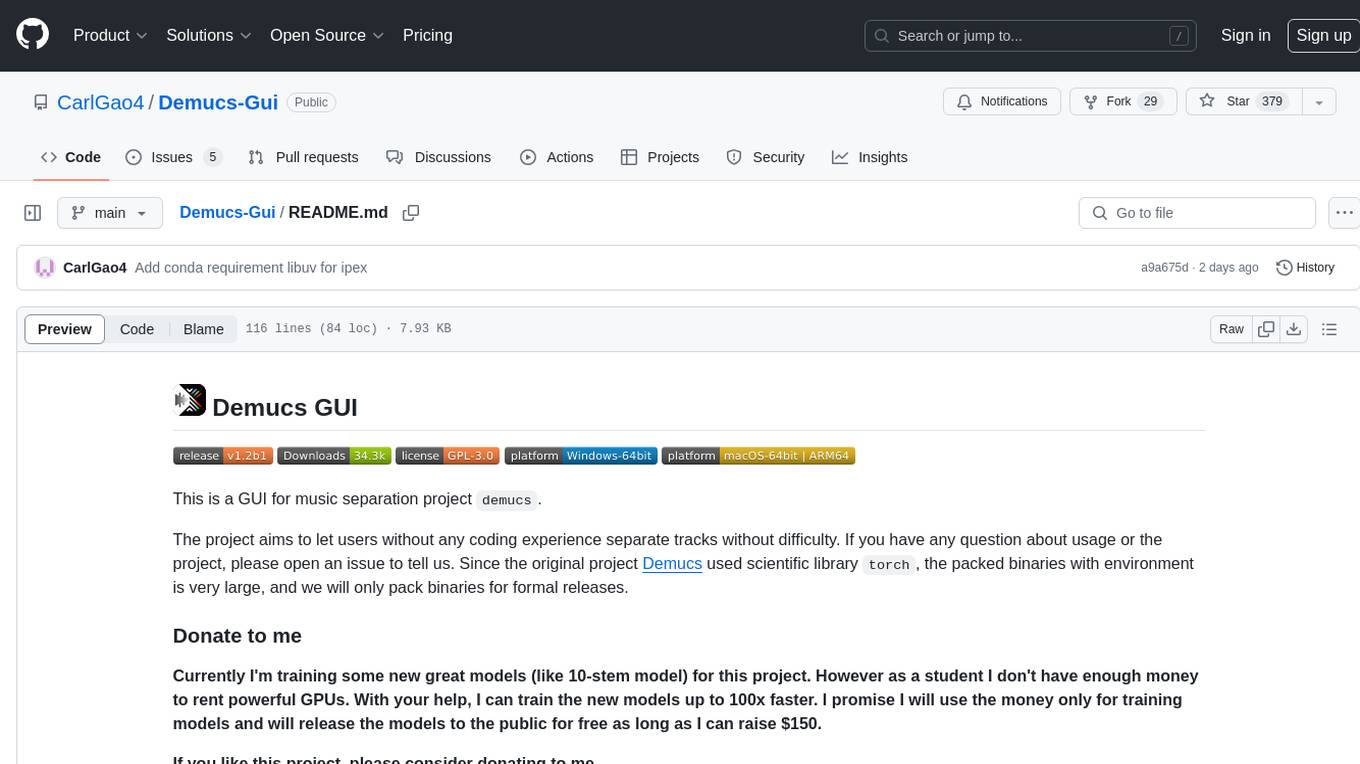
Demucs-Gui
Demucs GUI is a graphical user interface for the music separation project Demucs. It aims to allow users without coding experience to easily separate tracks. The tool provides a user-friendly interface for running the Demucs project, which originally used the scientific library torch. The GUI simplifies the process of separating tracks and provides support for different platforms such as Windows, macOS, and Linux. Users can donate to support the development of new models for the project, and the tool has specific system requirements including minimum system versions and hardware specifications.
For similar jobs

agents
The LiveKit Agent Framework is designed for building real-time, programmable participants that run on servers. Easily tap into LiveKit WebRTC sessions and process or generate audio, video, and data streams. The framework includes plugins for common workflows, such as voice activity detection and speech-to-text. Agents integrates seamlessly with LiveKit server, offloading job queuing and scheduling responsibilities to it. This eliminates the need for additional queuing infrastructure. Agent code developed on your local machine can scale to support thousands of concurrent sessions when deployed to a server in production.

Applio
Applio is a VITS-based Voice Conversion tool focused on simplicity, quality, and performance. It features a user-friendly interface, cross-platform compatibility, and a range of customization options. Applio is suitable for various tasks such as voice cloning, voice conversion, and audio editing. Its key features include a modular codebase, hop length implementation, translations in over 30 languages, optimized requirements, streamlined installation, hybrid F0 estimation, easy-to-use UI, optimized code and dependencies, plugin system, overtraining detector, model search, enhancements in pretrained models, voice blender, accessibility improvements, new F0 extraction methods, output format selection, hashing system, model download system, TTS enhancements, split audio, Discord presence, Flask integration, and support tab.





